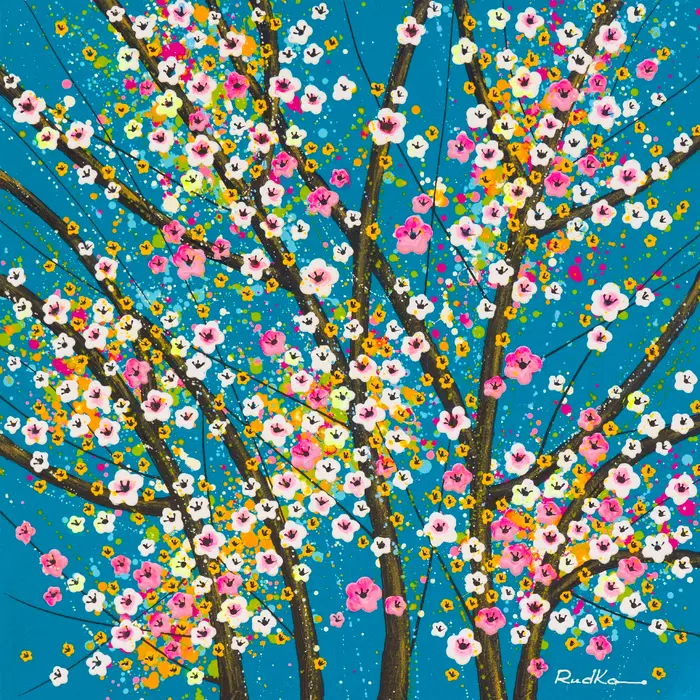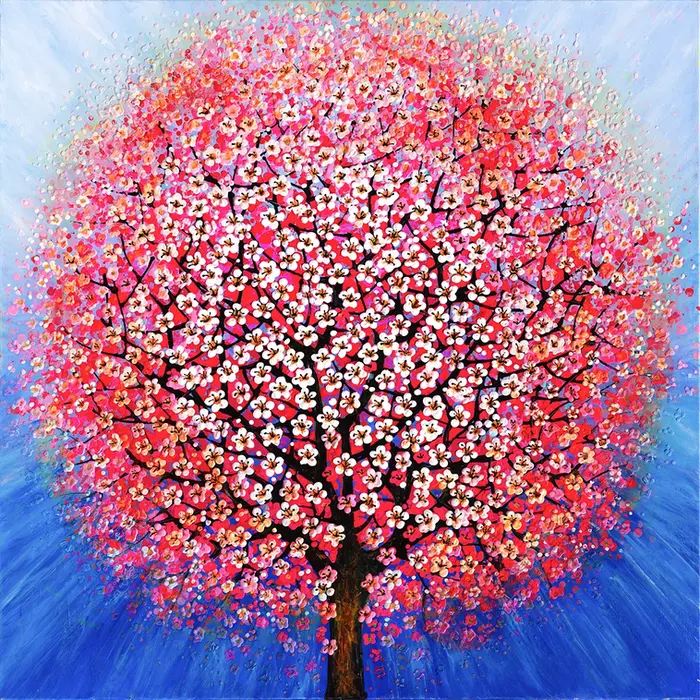Tanya Rudka

Tanya Rudka was born in 1971 in Simferopol, Crimea, Ukraine. She studied at the Simferopol Children's Art School and the Crimean Art College named after N. S. Samokish. In 1994, she immigrated to Israel and settled in a small northern town. Over the past ten years, Tanya has fully dedicated herself to a successful career as an artist.
Her works often feature geometric shapes, particularly circles, which symbolize eternity, vitality, unity, and spirituality. Tanya believes that circles represent wholeness, perfection, and positive energy.
Her colorful trees, with circle-shaped crowns, evoke the aesthetic of mandalas, which are used in Eastern religions as symbols of the Universe and spiritual well-being. These trees are reminiscent of the Mandala Tree, which symbolizes longevity, good fortune, and family stability.
Tanya's technique involves sprinkling paint to form precise shapes, often using splashing and dripping methods. She prefers pastel colors, which convey a sense of calm and freshness. Her choice of colors reflects her mood at the time of creation, rather than any particular season, and is influenced by the relationships between colors in her compositions.
Tanya Rudka's work has been exhibited in numerous solo and group shows in Israel, the USA, and recently in China and other parts of the Far East.
Tanya Rudka's artworks
Tanya Rudka
Tanya Rudka was born in 1971 in Simferopol, Crimea, Ukraine. She studied at the Simferopol Children's Art School and the Crimean Art College named after N. S. Samokish. In 1994, she immigrated to Israel and settled in a small northern town. Over the past ten years, Tanya has fully dedicated herself to a successful career as an artist.
Her works often feature geometric shapes, particularly circles, which symbolize eternity, vitality, unity, and spirituality. Tanya believes that circles represent wholeness, perfection, and positive energy.
Her colorful trees, with circle-shaped crowns, evoke the aesthetic of mandalas, which are used in Eastern religions as symbols of the Universe and spiritual well-being. These trees are reminiscent of the Mandala Tree, which symbolizes longevity, good fortune, and family stability.
Tanya's technique involves sprinkling paint to form precise shapes, often using splashing and dripping methods. She prefers pastel colors, which convey a sense of calm and freshness. Her choice of colors reflects her mood at the time of creation, rather than any particular season, and is influenced by the relationships between colors in her compositions.
Tanya Rudka's work has been exhibited in numerous solo and group shows in Israel, the USA, and recently in China and other parts of the Far East.





















